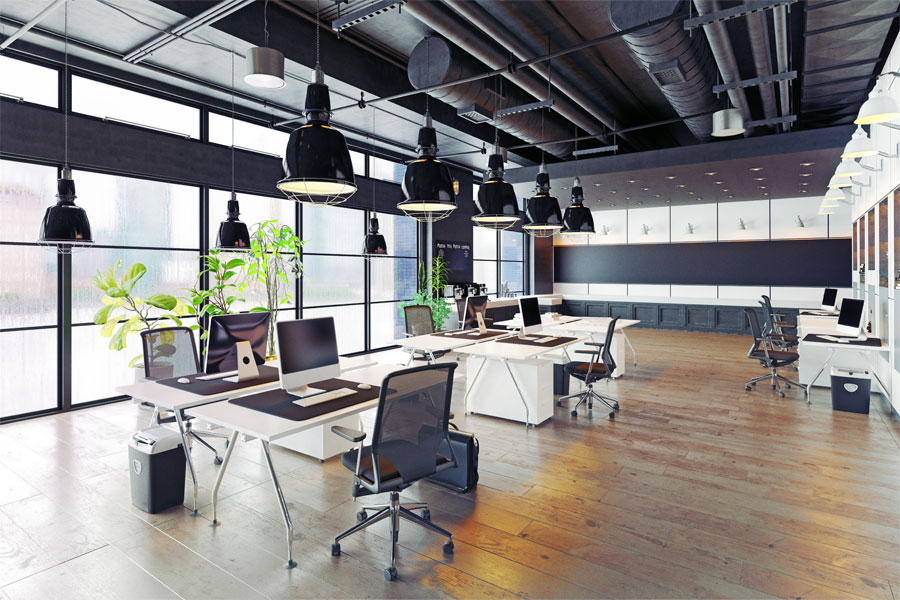Designing effective learning and training environments is crucial for fostering optimal educational experiences. Commercial interior design companies play a pivotal role in creating spaces that maximize knowledge acquisition and skill development. This article explores the significance of well-designed learning and training environments, the importance of space planning, design and build strategies, and how these elements contribute to effective learning experiences.
Also read:Top 20 Office Interior Designer Companies in Delhi NCR
Understanding the Role of Learning and Training Environments:
The Impact of Physical Environment on Learning:
The physical environment significantly influences learning outcomes. Well-designed spaces that promote comfort, focus, and engagement positively impact learners’ cognitive processes and motivation. Commercial interior design companies prioritize creating environments that support learning objectives and stimulate intellectual growth.
Creating Supportive and Engaging Spaces:
Effective learning environments are designed to foster a sense of belonging and facilitate active participation. These spaces incorporate elements such as comfortable seating, flexible layouts, and visually appealing aesthetics to create a welcoming atmosphere conducive to collaboration and exploration.
Our space planning services in commercial interior design focus on optimizing the functionality and efficiency of your workspace, ensuring a seamless and well-utilized layout.
Enhancing Collaboration and Interaction:
Collaboration and interaction are essential components of effective learning. Commercial interior design companies incorporate features like collaborative workstations, breakout areas, and interactive technology to encourage teamwork, discussion, and knowledge sharing among learners.
Space Planning for Learning and Training Environments:
Assessing the Needs and Objectives of the Space:
Commercial interior design companies conduct a comprehensive analysis of the learning and training requirements to develop customized space plans. Understanding the specific needs of the educational program, the number of participants, and the desired learning outcomes informs the design process.
Flexible Layouts for Multi-Purpose Spaces:
Flexibility is key in learning environments, as they often accommodate various activities and learning modalities. Incorporating adaptable furniture, movable partitions, and modular design allows for easy reconfiguration of spaces to accommodate different group sizes and teaching methods.
Zoning and Designating Different Areas:
Creating distinct zones within a learning environment helps facilitate different activities and learning styles. Commercial interior design companies utilize zoning techniques to designate areas for lectures, group discussions, individual study, and hands-on practical training.
Design and Build Strategies for Learning and Training Spaces:
Incorporating Technology and Audio-Visual Integration:
Technology plays a crucial role in modern learning environments. Commercial interior design companies integrate audio-visual equipment, interactive displays, and digital learning tools to enhance instructional delivery and engage learners effectively.
Ergonomic Furniture and Equipment Considerations:
Ergonomics are paramount for creating comfortable and supportive learning spaces. Commercial interior design companies prioritize selecting ergonomic furniture, adjustable workstations, and appropriate equipment to promote proper posture, reduce fatigue, and enhance productivity.
Our design and build services in commercial interior design offer a comprehensive solution from concept development to final construction, ensuring a seamless and efficient process.
Creating a Welcoming and Inspiring Atmosphere:
The ambiance of a learning environment greatly impacts learners’ engagement and motivation. Commercial interior design companies employ design elements such as color schemes, lighting, and artwork to create a visually stimulating and inspiring atmosphere that encourages active participation and fosters creativity.
Optimizing Acoustics for Effective Learning:
Soundproofing and Noise Control Measures:
Acoustic considerations are vital to minimize distractions and create a focused learning environment. Commercial interior design companies employ soundproofing techniques, acoustic paneling, and proper insulation to reduce external noise and reverberations.
Enhancing Speech Clarity and Auditory Comfort:
Clear communication is essential in learning environments. Commercial interior design companies optimize acoustics to ensure proper speech intelligibility, minimize echo, and create comfortable listening conditions for learners and instructors.
Designing Spaces for Group and Individual Learning:
Balancing acoustic requirements for group discussions and individual study areas is crucial. Design solutions such as acoustic partitions, sound-absorbing materials, and strategic placement of furniture help create acoustically optimized spaces for different learning activities.
Lighting Design for Learning and Training Environments:
Natural Light Integration and Daylighting Strategies:
Harnessing natural light improves the overall well-being and cognitive performance of learners. Commercial interior design companies employ daylighting strategies, such as large windows, skylights, and light shelves, to maximize natural light penetration and reduce reliance on artificial lighting.
Balanced Artificial Lighting for Various Activities:
Artificial lighting is carefully planned to ensure adequate illumination throughout the learning environment. Commercial interior design companies utilize a combination of ambient, task, and accent lighting to create visually comfortable and energy-efficient spaces that cater to different activities and moods.
Task Lighting and Ambient Illumination Considerations:
Task lighting is crucial for specific learning activities that require focused attention. Commercial interior design companies incorporate task lighting solutions, such as adjustable desk lamps and directional lighting fixtures, to provide localized illumination where needed. They also ensure appropriate ambient lighting levels to maintain an overall comfortable and balanced environment.
Incorporating Technology for Enhanced Learning:
Interactive Displays and Digital Learning Tools:
Digital technology enhances learning experiences by facilitating interactive and multimedia-rich content delivery. Commercial interior design companies integrate interactive displays, touchscreens, and other digital learning tools to encourage active participation, collaboration, and hands-on learning.
Audio-Visual Integration and Multimedia Capabilities:
The seamless integration of audio-visual equipment, such as projectors, screens, and sound systems, enhances instructional delivery and engagement. Commercial interior design companies ensure proper placement and concealment of technology components to maintain a visually clean and uncluttered learning environment.
Technology Infrastructure and Accessibility:
Reliable technology infrastructure is essential for uninterrupted learning experiences. Commercial interior design companies collaborate with IT specialists to ensure adequate power outlets, data ports, Wi-Fi coverage, and other technological requirements are integrated seamlessly within the space. They also prioritize accessibility features to cater to learners with disabilities.
Our 3D visualization services in commercial interior design bring your vision to life, providing realistic and immersive representations of your space before construction begins
Creating Collaborative and Interactive Spaces:
Flexible Furniture and Configurable Layouts:
Commercial interior design companies select versatile and adaptable furniture to accommodate various teaching methods and group sizes. Flexible seating options, movable tables, and modular furniture enable quick reconfiguration to support different learning activities and encourage collaboration.
Group Work Areas and Discussion Zones:
Designating dedicated spaces for group work and discussions fosters collaboration and knowledge sharing. Commercial interior design companies create comfortable breakout areas, informal meeting spots, and collaborative workstations to facilitate group interactions and brainstorming sessions.
Incorporating Learning Pods and Collaboration Spaces:
Learning pods and collaboration spaces provide semi-private areas for focused discussions and group projects. Commercial interior design companies design and strategically place these spaces within the learning environment to promote teamwork, idea exchange, and creative problem-solving.
Enhancing Accessibility and Inclusivity:
Universal Design Principles for Learning Spaces:
Commercial interior design companies adhere to universal design principles to ensure that learning environments are accessible and inclusive for individuals with diverse needs. Incorporating features like ramps, wide doorways, and adjustable furniture ensures equal access and participation for all learners.
Considerations for Individuals with Disabilities:
Accessibility for learners with disabilities is a priority in the design of learning environments. Commercial interior design companies incorporate features such as braille signage, assistive technology, accessible seating, and sensory considerations to create an inclusive space for individuals with visual, hearing, mobility, or cognitive impairments.
Designing for Diverse Learning Styles:
Commercial interior design companies understand that learners have different preferences and learning styles. They create a variety of spaces that cater to visual, auditory, kinesthetic, and tactile learners. Providing options such as quiet areas for reflection, hands-on learning zones, and visual displays helps engage learners and support their individual learning needs.
Conclusion:
Designing effective learning and training environments requires thoughtful consideration of space planning, design and build strategies, and the incorporation of elements that optimize learning experiences. Commercial interior design companies play a crucial role in creating spaces that foster engagement, collaboration, and skill development. By prioritizing comfort, flexibility, technology integration, acoustic optimization, and inclusive design, these companies create environments that inspire and empower learners, ultimately enhancing the effectiveness of educational and training programs.
Also read:Top Trends of Office Interior design evolving in 2023





